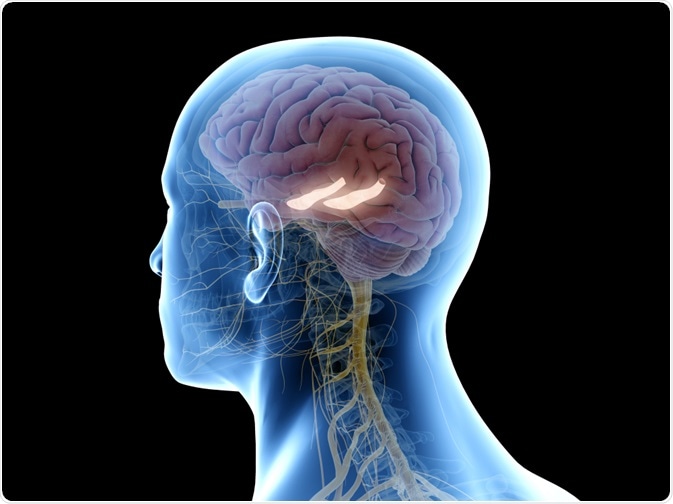The hippocampus forms part of the cerebral cortex and is found in all vertebrates. This structure has a long evolutionary history, over which some features have been conserved, such as its connection to other areas in the brain, while others have diverged such as the variation in cellular composition found across different groups of vertebrates, for example. The hippocampus plays an important role in spatial memory, navigation and in some animals, episodic memory.
 Image Credit: SciePro/Shutterstock.com
Image Credit: SciePro/Shutterstock.com
Structure and size
The structure of the hippocampus is similar across various mammalian species, ranging from the platypus through to primates such as humans. Size, however, varies somewhat from mammal to mammal, with the size-to-body-size ratio being twice as large for primates as it is for the platypus.
The neocortex-to-body-size-ratio, however, increases at a much greater rate than this, meaning the hippocampus takes up a much larger portion of the cortical mantle in a rodent, for example, than it does in a human. In mature humans, the hippocampus volume is around 3.0 to 3.5 cm3 on each side of the brain, whereas the neocortex volume is around 320 to 420 cm3.
The size of the hippocampus is associated with spatial memory. Generally, spatial memory improves with increasing hippocampal volume when animals of similar species are compared. This also extends to gender differences, with the difference between male and female spatial memory ability being stronger when the between-gender difference in hippocampal volume is greater.
Different species
Species of animals that are not mammalian have a different brain structure to that found in mammals, although the structure is considered homologous to the mammalian one. The cortex is only fully developed in mammals, but the pallium (which the cortex evolved from) is found in all vertebrates including even the most primitive forms such as the lamprey.
The pallium is made up of three zones, referred to as the medial, lateral, and dorsal zones. It is the medial or central zone from which the hippocampus is derived. The medial pallium does not have the same seahorse shape as the hippocampus, but the structures do share chemical and functional aspects in common. Research shows that these structures play a role in spatial cognition among birds, fish and reptile species.
In birds, the association is so widely acknowledged that anatomists call the medial pallium the "avian hippocampus." Some evidence suggests birds that catch their food have a larger hippocampus than non-food-catching birds and that if the hippocampus is damaged in these animals, their spatial memory becomes impaired.
In fish, the brain structure is somewhat different. In the great majority of fish species, the forebrain essentially has an everted structure compared with other vertebrate species; structures that would usually lie inside, adjacent to the ventricles in most vertebrates are found on the outside in these fish species.
This means that the medial pallium or hippocampus found in most vertebrates usually corresponds to the lateral pallium in fish. Research has shown that fish possess a strong spatial memory which they use to form "cognitive maps" of the areas they populate and that when the lateral pallium is damaged, this ability is impaired.
The Evolution of the Human Brain
The hippocampus, therefore, appears to have played a role in spatial memory and navigation far back into the history of vertebrate evolution. Whether or not the medial pallium also plays a role in navigation among even more primitive species such as sharks or stingrays, is yet to be established.
Although some invertebrates such as the octopus and some insects also have good spatial and navigational abilities, the spatial system in these animal groups seems to differ somewhat from the systems found in mammals and no hippocampal-like structure has been identified in these animals.
Therefore, the navigational abilities demonstrated by mammals and these invertebrate species are unlikely to share the same evolutionary origin.
References
Further Reading
Last Updated: Mar 11, 2023